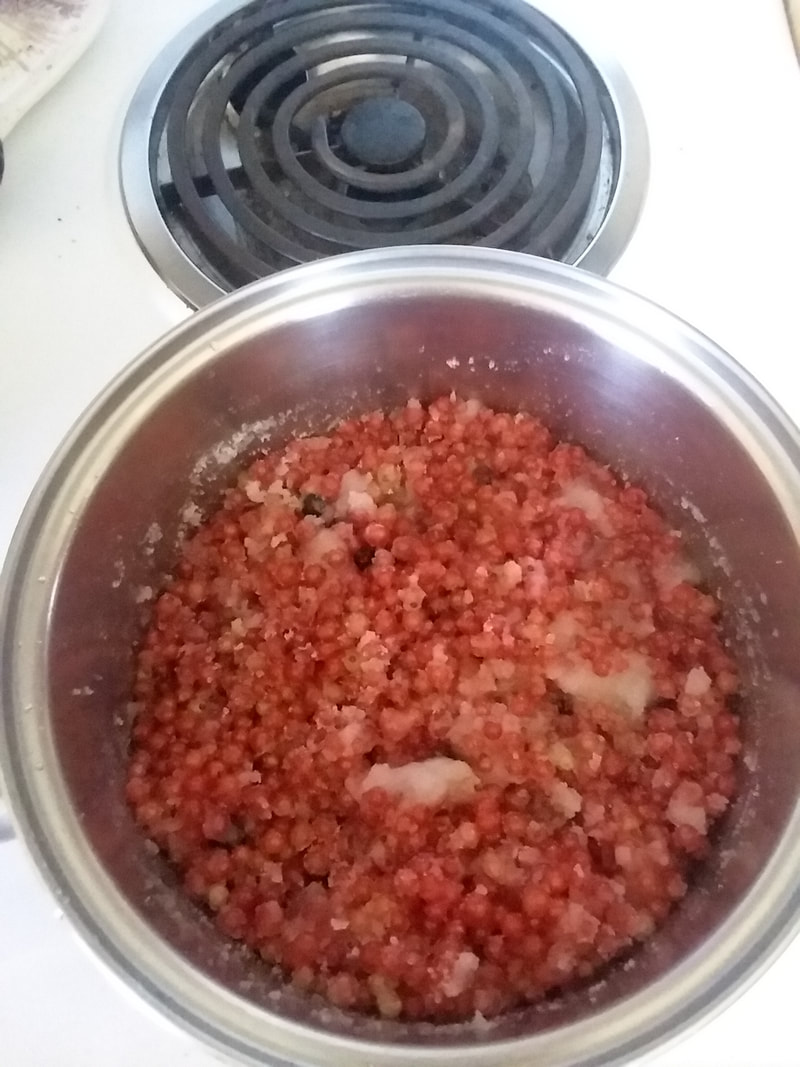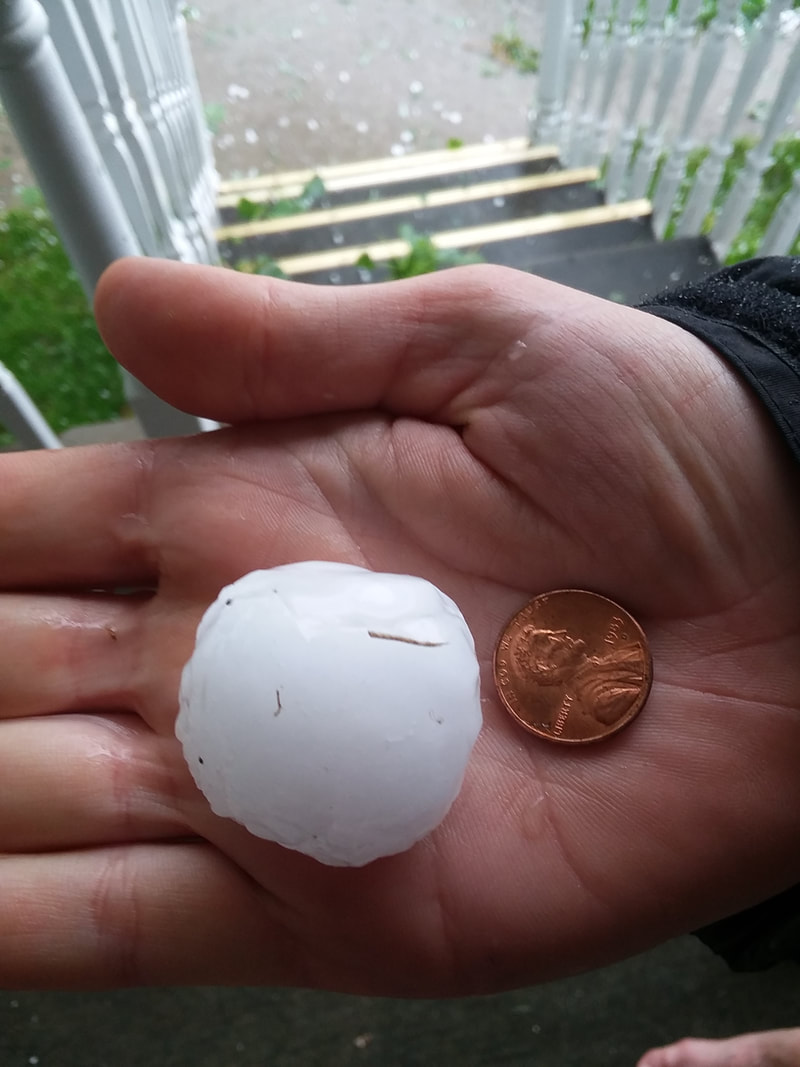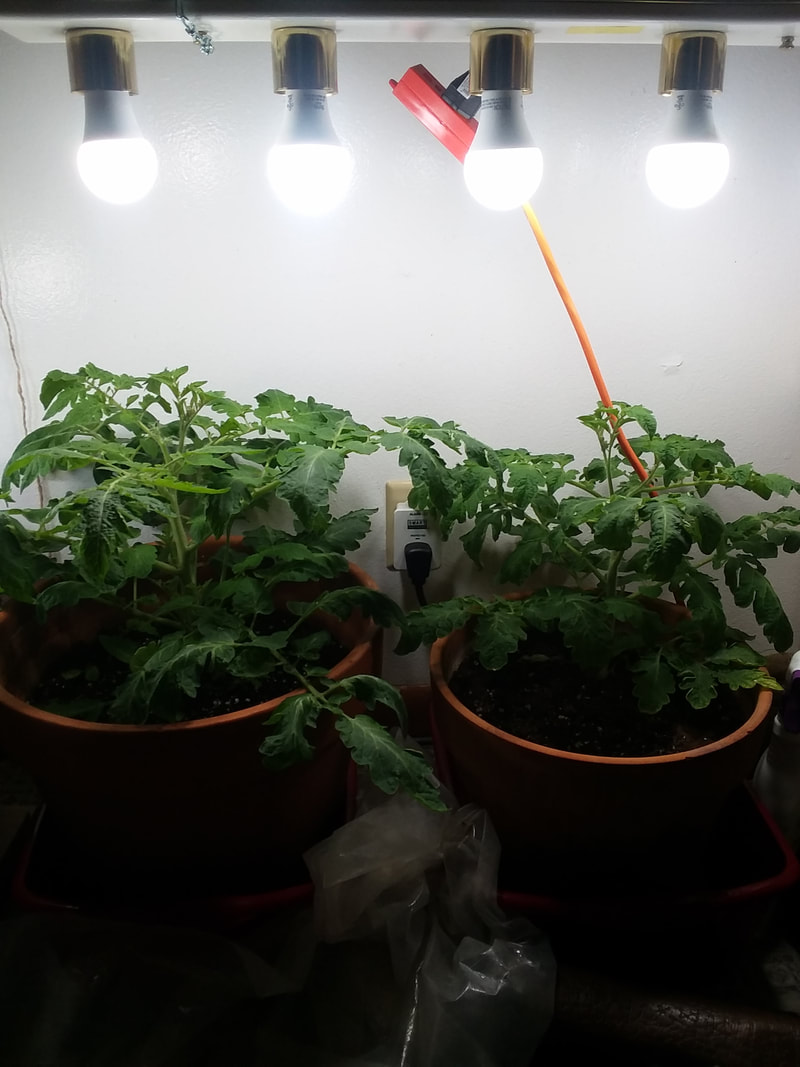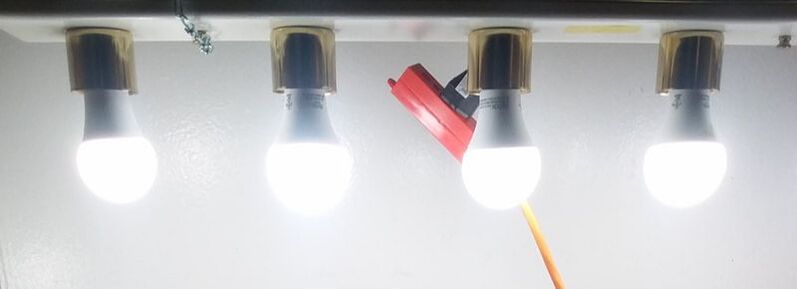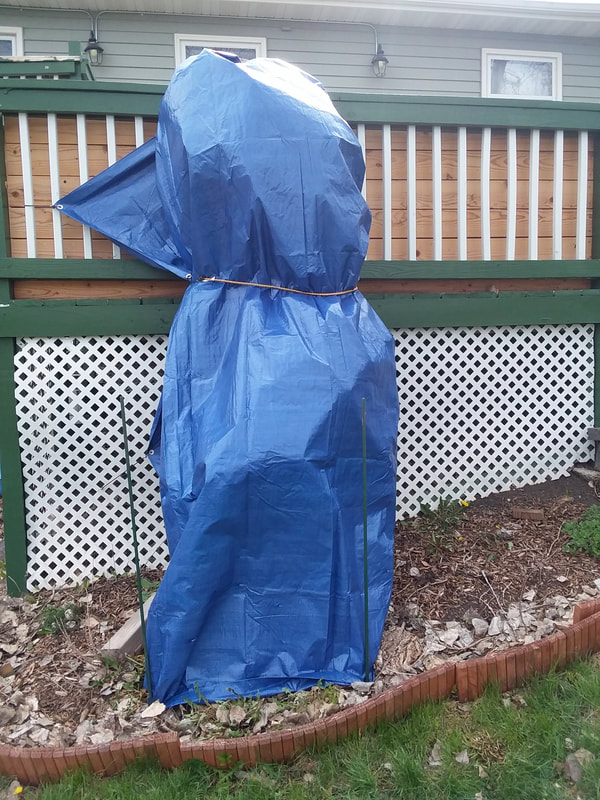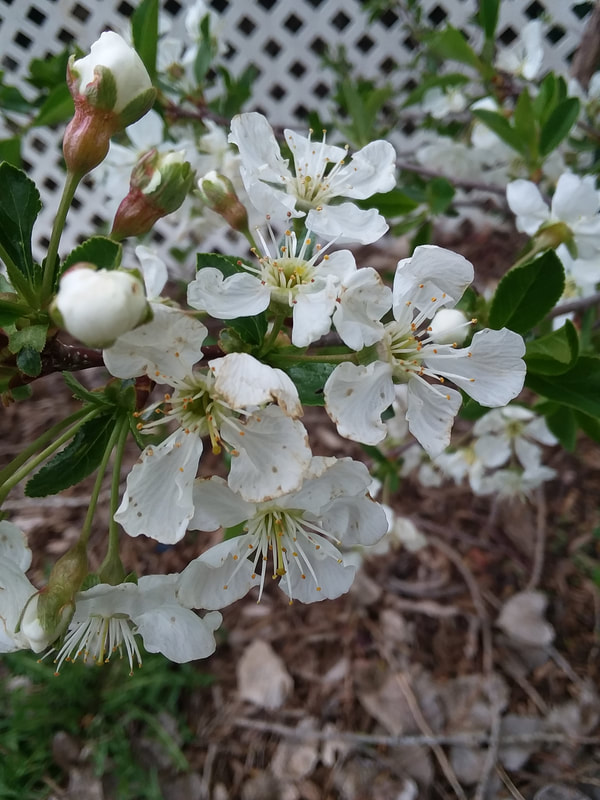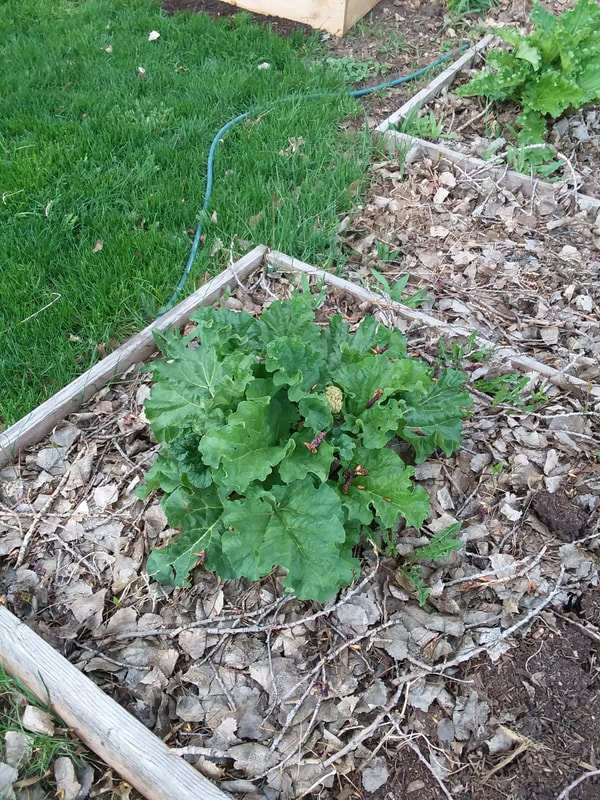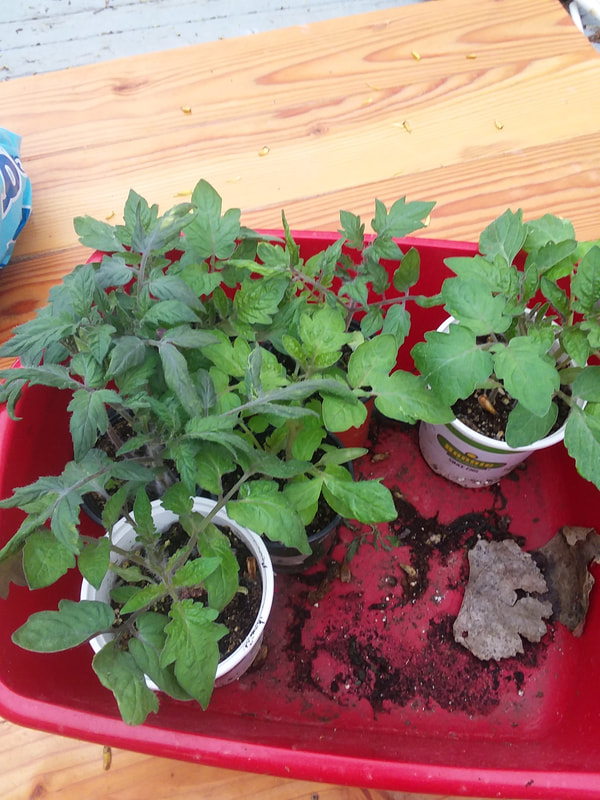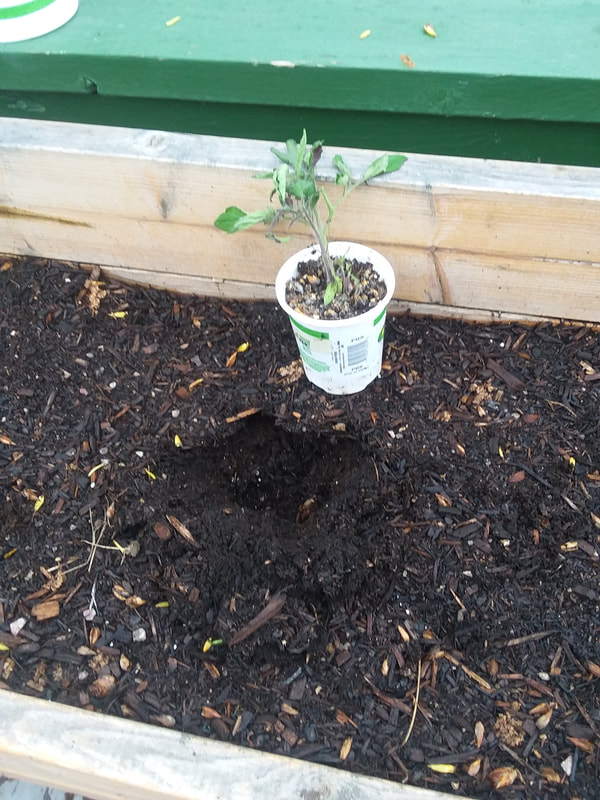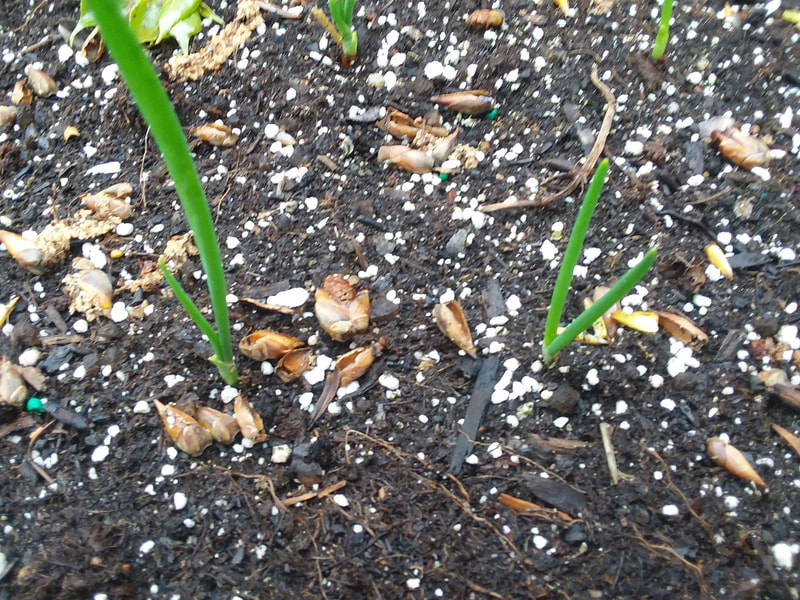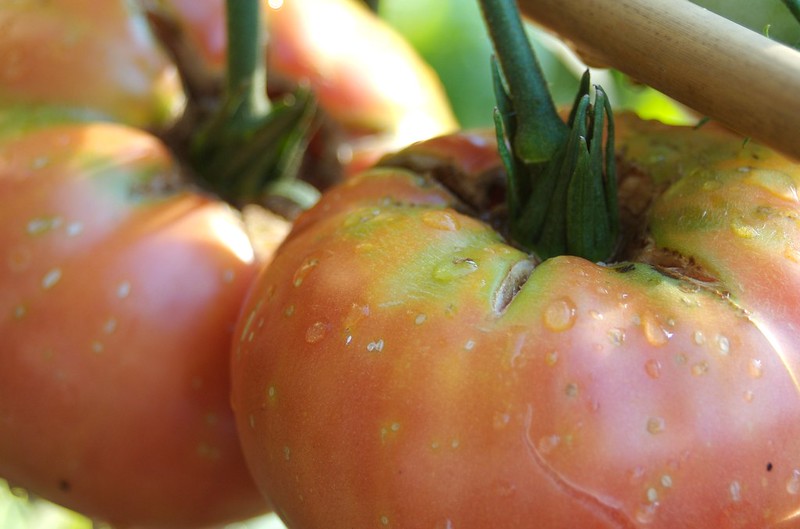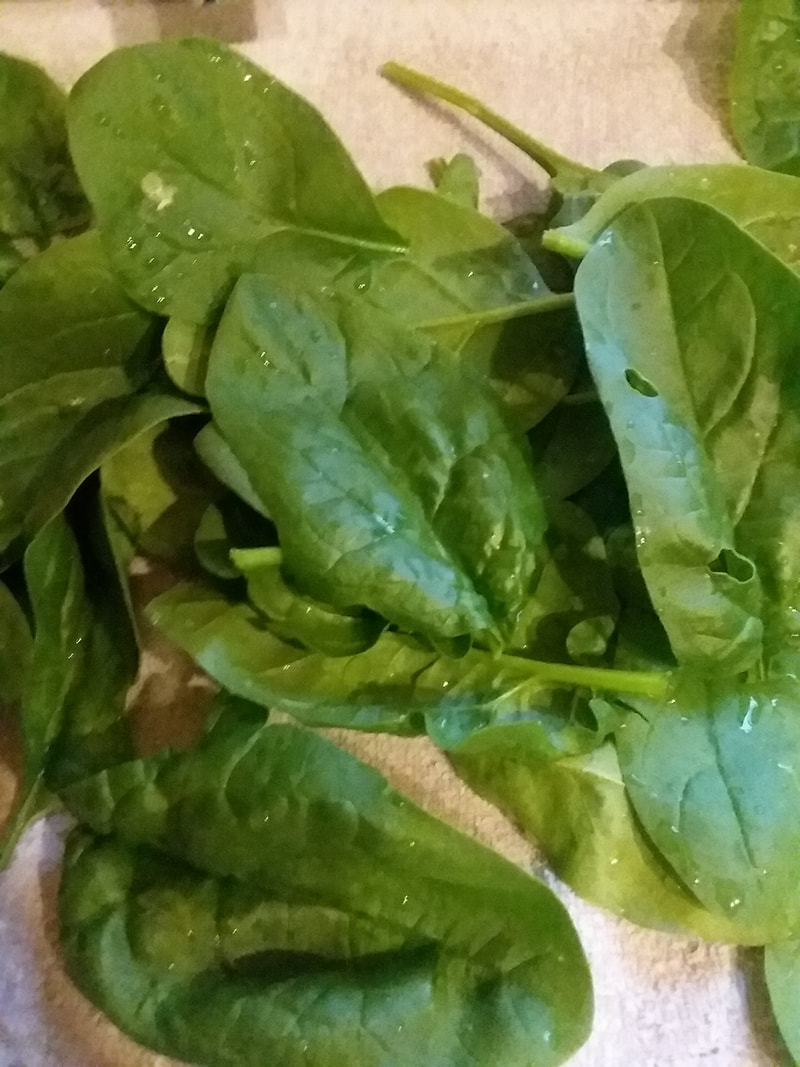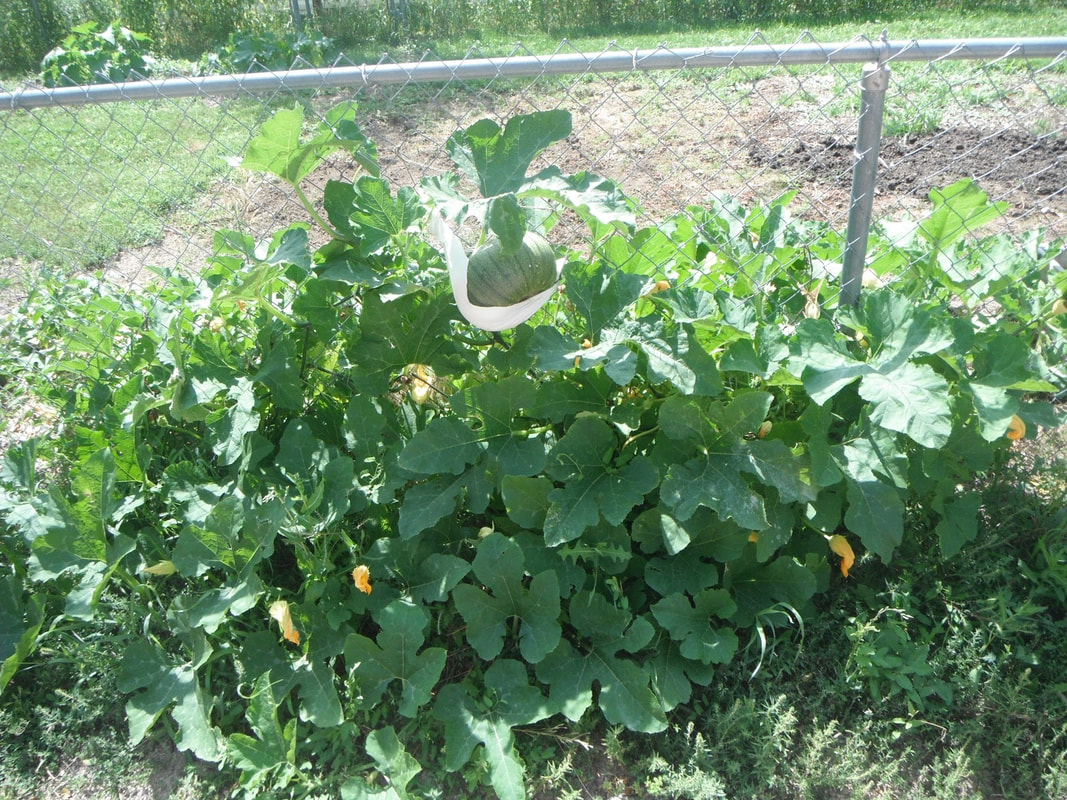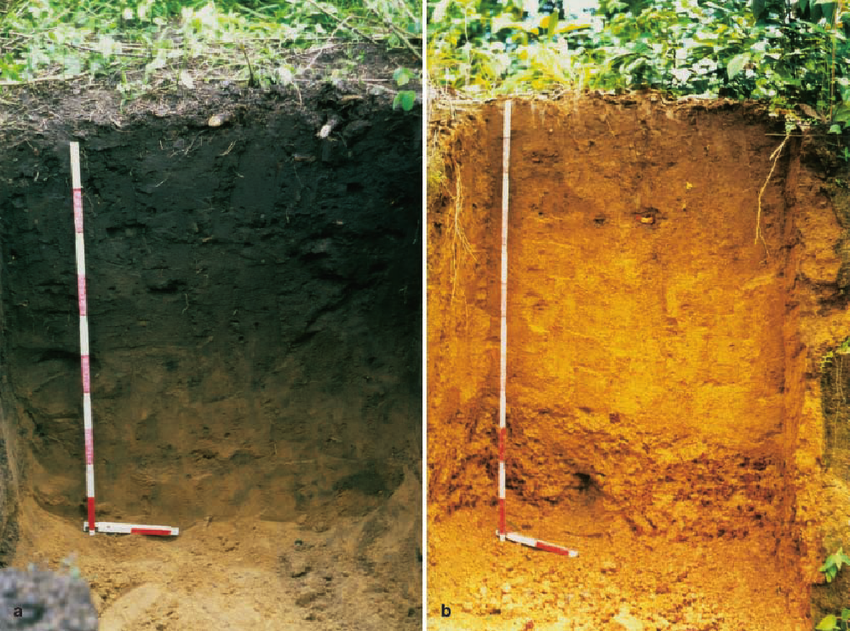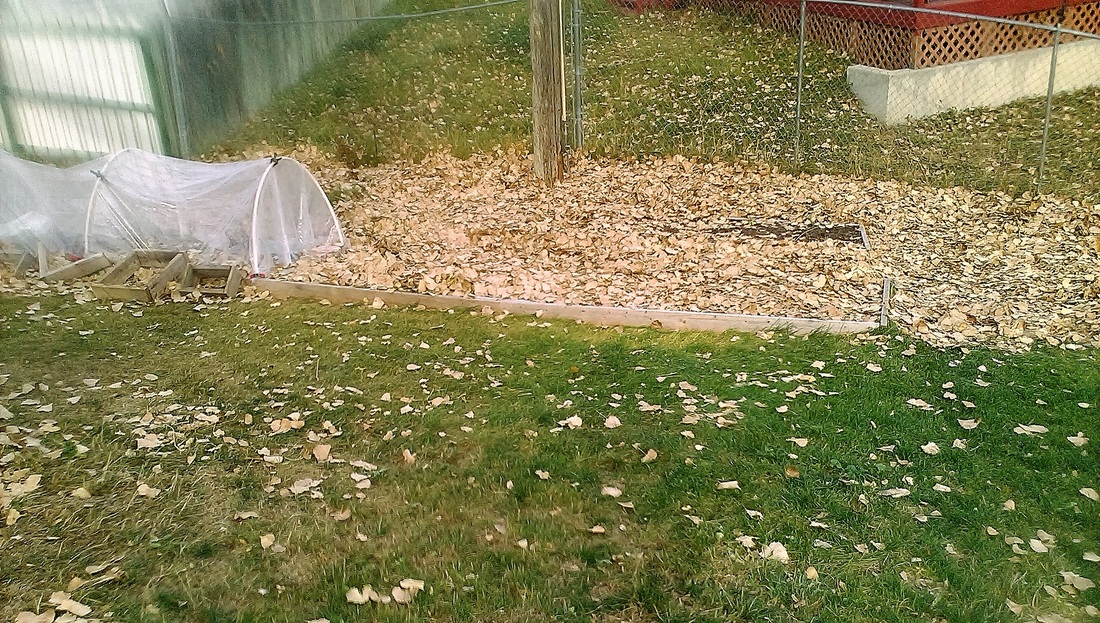|
After many years of waiting and bad crops with my currant bushes I managed to get enough off of them to bother making something from them. I plant these bushes 4 years ago and in every year since I have been fighting the birds, the weather and just bad timing trying to get more than a handful of currants. This year I finally did it. I actually have to thank the fact that I am working from home for this. It has really allowed me to monitor my various fruiting shrubs much better than I have in years past. Let me tell I am just a bit surprised by this since the weather this year has been atrocious for my garden. For most of the spring it hovered at or below 32 degrees and it rain/sleeted. Then flipping a complete 180 it jumped up to 90+ degrees for weeks on end with no rain which has turned portions of my garden to something like concrete. and the hail don't even get me started on the hail. '
But I and my garden persevered and push through all the bad weather to finally produce something I can enjoy eating. As I right this the the currants and the sugar is cooking together on the stove top and I really hope it turns out. Being able to produce my own food is part of how I am trying to live a greener life. The more I can grow at my house the less I have to buy which is better for the environment as well as being better for my wallet. For this particular foray in jam making I am using a simple recipe I found at the The Spruce Eats. https://www.thespruceeats.com/red-currant-jam-recipe-1327858 What I liked about this recipe is that it also gives the amounts in grams and ml which makes it much easier to adjust to the amount of currants I have, and here at the Green Living Library stuff that is simple to use and change is gold to us. That's all for now
0 Comments
Growing a garden in an apartment or other small space is the ultimate test of plant growing ingenuity. When most people think of growing something indoors they think they need a nice sunny window to put the plants in. While a bright sunny window is nice to have it is by no means the only way to grow a garden in an apartment anymore.
With the advent of low cost, long lasting LEDs you can grow a garden just about anywhere without it costing a substantial amount of money. Just as an example you can see in a picture below where I grew cherry tomatoes and salad greens all winter long in an otherwise very dark room. This room hardly got any daylight into it and certainly none on the wall where I put the pots.
If you want to grow a garden inside then what you want to do is maximize efficiency in the following ways,
Lights When it comes to growing food inside I find it is best to start with your light setup. You want something that is adjustable in height so it can be raised or lowered according to plant height. It is important to keep lights just above the plant you are growing because this will get the most light to impact the plant leaves. Even with today's LEDs you still need to be close to the plant to offset the fact that light bulbs are not the Sun. Light systems can be purchased commercially like this one or you can make your own from DIY parts. The commercial bought systems are not cheap but they come with all the bells and whistles and come with bulbs specifically tuned to produce light in the wavelengths plants need for photosynthesis. A DIY system is not for the faint of heart and I do not recommend them unless you are comfortable with doing your own wiring. That wiring can be as complicated as actually wiring up an entirely new light system or just modifying an existing one. The one seen in this photo below was my approach since I could get the parts for a very low cost. It consists of an old bathroom vanity light wired up to be plugged into a wall receptacle instead of being hardwired.
Just to reiterate if you are not confident in your ability to do electrical wiring or you live in a location that doesn't allow it,
DON'T DO THIS and I am not liable if you do and something bad happens. If you assemble your own grow lights you can either do something like I did you can use what I call a shop light setup. Doing it this way can be nice because you can get the same LED technology in these and they are built in a way that puts light where you want it. You can also get these with a receptacle plug pre-installed so that means no wiring for you which can be a stress reliever. When you buy the bulbs make sure to get ones that are at least 100 watts and in the daylight part of the light spectrum. These bulbs will put out a bright white light instead of the softer more yellow light usually found in most home lamps. An example of what I mean for the standard A21 bulb is below.
Growing Medium
The choice of what to grow your plants in can have a dramatic effect on the cost of the setup and the ongoing effort to make it work. In terms of expense the bottom of the shelf is just regular potting soil you would use in a pot. Most potting soils are soil less and are instead a mixture of organic and inorganic parts. Some of the most common potting soils are made from peat moss, vermiculite, and perlite which are all great at holding water and nutrients for the plant to use. The next step up is to use a hydroponic system that flushes a nutrient rich water over plant roots periodically. This system requires something for roots to anchor on like, clay pebble, coco chips, pine shavings or just plan old river rock. These systems are nice because they tend to be lightweight unless you use rock and you get very good production when compared to a potting soil setup. They do come with more expense because you have to supply extra nutrients, buy pumps and timers to regulate water flow and they use more electricity than a potting soil system. The step up from that is aeroponics which is basically hydroponics that does away with the growing medium altogether. It used fine misters to spray plant roots with a fine nutrient rich mist. It can work great when it works but this system is highly dependent on nothing going wrong. A power loss or a water supply failure causes the roots to dry out in minutes and you can lose a crop just as fast. So aeroponics is not for the faint of heart or for people that like to set it and forget it. To put these systems in terms of ease of use and likelihood of failure I would put them in the same order as expense. The addition of a water/nutrient holding medium in the first two systems reduces the chances of total failure. You have more time to catch and fix whatever is going wrong in the system. What I would do If I was a new indoor gardener I would set up the following system. I would use a soilless potting soil with a built in catch basin to hold extra water. I would place them under pre-purchased shop lights because of the ease of setup and the ability to raise and lower the lights easily. If I had the room I would multiple shelves of produce from floor to ceiling with 3 feet between each shelf. This should give enough room for most plants to grow while providing clearance for the lights. The plants I selected would most likely be any or all of the following,
I picked them because they continually produce and they don't need any pollination to produce. Hopefully, this gives you some ideas or inspiration to start growing your own indoor garden this winter so you can enjoy fresh produce all winter long. Its been a rocky start so far with below average temperatures and lots of rain but the 2020 garden is officially in the ground and growing.
Hopefully it stays a bit drier than last year so I wont have as many powdery mildew issues. Below is a gallery of some of the pictures from the year so far. To kick off my series about growing your own food I am going to start with the way I am most familiar.
Growing a garden in an average urban back/front yard. Growing your own food on an urban lot comes with its challenges as well as benefits. You obviously lack space that you would get on a larger piece of land but what you gain is easy access to water and immediate proximity to your garden. This walkout your back door kind of access makes it really convenient to do everything. From planting and maintaining to harvesting your produce, having your garden just 10 steps from your door makes it really easy to garden. Food…
You are probably thinking about it more than ever these days. With the pandemic sweeping across the globe we have all seen the impact it has had on the food system. From restaurants shutting down to empty grocery store shelves this pandemic has shaken the food system to its core. We have been given a glimpse into the inner workings of a system that usually delivers what we want when we want it without any hiccups. But just because it appears to be this indestructible behemoth of a system that is simply not true. The food system as we understand it is built of two separate supply chains. One chain that feeds into the grocery store system which caters to the home cooking crowd and one chain that feeds into the commercial food space. Commercial food for the purpose of this article includes restaurants, schools, prisons, event centers, and other large venues where lots of food is made. What the pandemic has done is thrown a wrench into the finely tuned food production and delivery system that is modern food. We have what is called a just in time delivery system. In most stores across the country there is roughly a three day supply of food on hand in the stores. This three day supply is based on the average food purchases that occur at that store. I will give you one guess about what happens when say a novel disease makes its world debut and people start to freak out. Suddenly that average consumption rate is useless, and stuff begins to fly off the shelves faster than it can be replenished. The emptiness then triggers more panic buying because omg there might not be enough food. Well that is both right and wrong. We are not going to run out of food in the short term there is plenty to go around. The immediate problem is that it isn’t going around as fast or as efficiently as before. That combined with the surge in demand has led to the current crunch in food supplies in some locations. The potential problem that worries me is the impact that this will have on future food supplies. Right now, we are living off the good times of years past but sooner than we think we will need to replenish that supply. In the normal course of things, spring is the time of year when crops are being planted, livestock is being born and we are laying the groundwork for next year's food. But this pandemic is wreaking havoc on certain parts that system, most notably the vegetable and fruit farms/orchards. These farming systems are still heavily reliant on manual human labor to plant and harvest the food. You can’t pick an apple or harvest lettuce with a machine. This pool of human labor is jeopardy because in many parts of the world these farmworkers are among the most vulnerable to getting this illness. They live and work in close conditions, in many cases have poor sanitation and they must travel to follow the various harvest seasons. You combine this with border closures that stop these workers from even getting to their worksites and you have a long term problem in the making. This problem is simple without the workers ever arriving, things do not get planted. If they do get planted but enough workers get too sick to work or even die, then the produce won’t be harvested in time or at all. This means the real impact on the food system is potentially sometime in the future when there really will be a food shortage of at least certain types of food. So what does this mean for the everyday person like you…. Well it means you should seriously consider trying to grow some food of your own. Every little bit helps and whatever you can do to stabilize your own food supply puts less strain on a system that will continue to be under a lot of strain for a while yet. Stay tuned for a series of posts going over several options for how to maximize your available growing space and what to grow in those spaces that will give you the most bang for your dollar.
Having a garden is not just for those who have large plots of land that they can till up and plant seeds in. Even someone with no more space than a deck can have a bountiful container garden that can produce just as much and in some cases more than a garden planted in plain old dirt. This is possible because you can tailor the soil medium for maximum growth and place the pots where they can get the perfect amount of heat and sunlight.
There are a few things to consider when establishing a container garden.
By now you have all seen it in your local grocery stores. The shortages of canned, frozen, and bulk food stuff just flying off the shelves because people are afraid that they won't have enough.
Well I got good news and I got bad news…. The good news is we are not going to run out of food at least not in the way you might be thinking. The bad news is we might run short of the food that makes life so much more flavorful and nutritious. To really explain this I am going to have to do a somewhat deep dive into how food is grown in modern agriculture and how food is harvested, shipped, stored and sold. To do this I am going to focus on 3 different common foods that all of us eat and that we have available to us pretty much year round in the developed world. 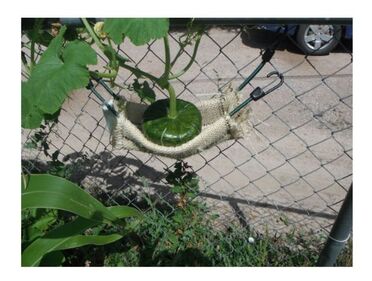 Summer is of course gardening season and if you manage to get a bountiful harvest despite all the things that would set you back you need someway to save all of this produce. To that end I will be presenting you the definitive guide to preserving all sorts of food from the garden. Just kidding….. There is no way that I could cover all the things that could and should be done to safely preserve food. The knowledge of how to do this fills bookshelves in stores and your local library and all I will attempt to do here is give you a basic overview of the 4 most common types of food preservation. So I don't know about the rest of you but I have been one busy little person this spring and that is why the first post in weeks will be a short one. The weather finally got nice enough for me to get the rest of my garden in and as of today I get to enjoy the first "fruits" of my labor. Well not technically fruit I guess since its spinach that I will be eating but who cares about semantics right. This spinach will hopefully be the first harvest of a abundant year that got off to a really rough start. So for your viewing pleasure a picture of my spinach. So I have to apologize for that whole viewing pleasure comment above in retrospect it sounded a bit dirty but I just have to leave it in its to much fun.
Until next time Green Living Library.
What is spring so far am I right….
If you live in the Midwest of the United States like I do you most likely have had your fill of the this intense spring weather we have been experiencing. This weather which includes snow just a few days ago for me has been a huge cramp in my planting schedule for this spring. Normally by this time of year I have my entire garden planted and I have moved onto mowing grass and keeping up on other projects that always take up my spring. At this point I only have my onion, beets and spinach in the ground which is okay I guess since they can take all the cold crappy weather we have been having. But this late start got me thinking I have just essentially been robbed of about 20 days of my growing season and it left me with all sorts of questions like…. How is that going to affect my season? Will I be able to grow the long season crops that I want to? What should I grow to take advantage of what time I have left? Do I need to consider season extension this fall? Yes lots of questions…. Short Season Crops A spring like this calls for the planting of cool season and short season crops. These types of crops typically take 50-90 days to grow and produce a crop and some will keep producing as long as you keep harvesting. Plants to consider would include
Double Cropping/AKA Companion Planting When you are dealing with a shorter planting season one thing to think about is double cropping or companion planting. There are alot of crops out there that you can grow in the same space at the same time which or course means you can grow more in the same space. An example of this is the three sisters planting system attributed to the Native Americans in the USA. They would plant corn, climbing beans and squash in the same area and all three species complement each other and can be grown in the same space without interfering with each other. Season Extension Finally the big kahuna thing you can do to make up for this short season is the plan some sort of season extension device for the end on the season to try and get back some of this days in the fall. Season extension comes is three evermore expensive flavors for the home gardener. Low tunnels Low tunnels are basically little mini greenhouses created by installing metal or plastic hoops over the garden bed and then covering them with plastic. In the fall they work best for low growing and confined crops, think salads and root vegetables. Most everything else is too big or spread out by this time of the growing year to work. They are great season extenders for pretty much everything in the spring since everything is small that time of year. High Tunnels Like I am sure you guessed from the the name high tunnels are like low tunnels except they are much bigger. These are made in much the same way as low tunnels with larger stronger hoops and more supports. These can be used almost like actually greenhouse but they are not a durable or as easy to control temperature. The advantage of these over low tunnels is that they can contain pretty much every crop you can grow and with a larger area protected they are less prone to large temperature swings. Greenhouses Finally you have greenhouses which come in lot of different varieties and purposes. The upside to these is you can really control the temperature in these much better than when compared to the the tunnel structures. This downside to them however is that they are relatively permanent structures and they will be in that spot for a long time. You can work around this depending on your situation but for most part you are stuck with wherever you build it. The moral of the story With that good luck on your gardening endeavours and I hope the summer turns out to be better than this spring has been. For more information like this check out other articles here on the Green Living LIbrary 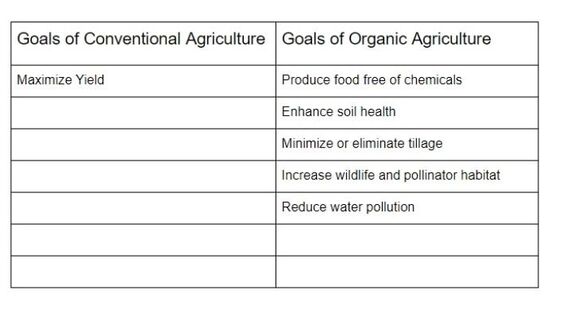 The data is in organic food can feed the world assuming the following, · Everyone become vegetarian or vegan · We reduce food waste by 50% · 100% reduction in land used to grow animals. Wheeew that seems to be a bit of a problem since the consumption of meat is going up as more countries reach a higher standard of living. What we need to do and what we’re doing are two lines on a graph getting farther apart as more time passes. But all is not lost so do not fear It is my position that organic farming can feed the world when combined with technology, development of new crop varieties and a frank assessment of how food is grown around the world. Depending on who you ask there is no way that organic farming can feed the 10 billion+ people that are predicted to be alive by 2050. (Looking at you Big AG) But the really stupid thing about that statement is we aren’t feeding the 7,701,039,711 people that are alive right now and it has nothing to do with how much food we grow. We grow enough food to give everyone on this planet enough to eat right now but as of 2016 around 11% of the world doesn’t get enough food to meet basic calorie needs. They don’t get fed because of the following, · They can’t afford it (all hail the almighty dollar) · They lack the knowledge, ability or money to grow it themselves · We waste 1/3 of all food grown · Regional conflicts cut off supplies of food The same people that will say that organic cannot feed the world will also trot out the studies that show that on average organic farming is 20% less production than conventional farming. While I do not dispute the accuracy of that research I fail to understand why it matters. I say this because the reasons people go hungry has nothing to do with how much food is grown. Take food waste for example globally with we waste 1/3 aka 33% percent of the all the food grown. Now some of this waste is unavoidable, bad weather ruins a crop or it is destroyed by fire or infested with rodents etc. But a lot of it is wasted especially in the western world because it is not pretty enough and it’s thrown out before it even gets to the person who will eat it. Food waste is a problem we can tackle with better application of technology we already have like better weather forecasting, harvest, storage and transportation equipment and education to individuals and groups on how to grow transport and process food. The unfair comparison of conventional to organic yields I want to talk a little bit more about the often cited 20% shortfall of yield when comparing organic to conventional agriculture. Comparing the two systems I believe is inherently unfair to the organic system of growing food. While both systems grow food for the consumption of humans/livestock that is where the similarities typically end and the differences begin to emerge. Laid out in the table above you can see some of the widely accepted goals of the two systems. When you look at the broad sweep of goals espoused by organic agriculture it’s no surprise that the yield is less than conventional Ag. When the only thing you worry about is yield then of course you are going to have a higher yield. This difference is made even starker when you look at the recent history of conventional agriculture. Most of the effort to improve agriculture has been geared towards supporting and improving a system that has the singular goal of improving yield. Crops were developed that produced higher and higher yields but only with the addition of chemical fertilizers to boost growth and other chemicals to control insects and diseases. Where is the industry that supports the development of crops that can naturally deter insects and resist disease without chemical inputs? Well it doesn’t exist because the same companies that develop the wonder seeds are the same ones that sell the chemicals. There is not much profit in selling hardy seeds when you can sell not so hardy seeds and chemicals to make them better. Organic Yields are not as low as they seem. So while opponents of organic farming love to trot out the 20% smaller yield number it’s really not always that low when compared to conventional farming. For example many studies have shown that soybean, field peas and other legumes show equal yields to conventional farming. For other types of crops the yield gap can be reduced to 10% by using cover crops and rotating what you grow in the field. This means that for a measly 10% loss in yield on some crops we could grow our food in a way that enhances soil, sequesters carbon, empowers local family farms and provides us with chemical free all natural food. Going Vegetarian The other claim that everyone would have to go vegetarian is not without some merit. It takes a lot of land, water and other resources to raise the amount of meat that is currently consumed in the world. As much as I love a good burger I know that as an American I eat way too much meat and that I really need to eat more veggies fruits and other plant based foods. Not only is my meat heavy diet bad for the planet it is also been well documented that it is bad for my personal health as well. 10 Billion People The big scare at the center of this whole debate of course is the number of people that are expected to be here in 30 more years. The ironic thing about this is that the rate of population growth is actually shrinking rather dramatically. It is down from 2.09% per year in 1968 to around 1% right now. That being said there are certain areas of the world that are still have a rapid growth rate and of course these same areas are already some of the hardest hit with food issues. But if things keep improving with education, technology and maybe even social justice worldwide we could get to place where we don’t even reach 10 billion and the population naturally falls over time to a number we can easily feed. That is playing the long game and is most likely not something that you or I will see but it is a possibility. Feeding the World Organically Feeding the world in an organic way is not only possible but most likely needed if we are to continue to grow enough food to feed everyone. We cannot continue to degrade the soil and damage the biosphere that supports us if we expect to continue to survive as a species. Sources: https://www.worldometers.info/world-population/ https://www.cnn.com/2013/08/20/world/famine-fast-facts/index.html https://www.worldhunger.org/world-hunger-and-poverty-facts-and-statistics/ https://www.scientificamerican.com/article/3-big-myths-about-modern-agriculture1/ http://blogs.worldbank.org/futuredevelopment/rapid-slowdown-population-growth So spring is finally upon us again and you are starting to think about what needs to get the garden planted this spring. There are several things you can do right now to get the process going long before the weather is warm enough outside for the early spring crops.
Check out this article from Atlas Obscura that talks about the agriculture practice of food forests. I have talked about them a bit here at the Green Living Library but this article really brings the whole concept into light.
https://www.atlasobscura.com/articles/what-is-permaculture-food-forests?utm_source=Atlas+Obscura+Daily+Newsletter&utm_campaign=02bc067de7-EMAIL_CAMPAIGN_2019_04_03&utm_medium=email&utm_term=0_f36db9c480-02bc067de7-66632557&ct=t(EMAIL_CAMPAIGN_04_03_2019)&mc_cid=02bc067de7&mc_eid=50f86869b The thought of needing to rebuild urban soils probably strikes most of you reading this a funny at best and a waste of time at worst. What possible reason could you have for rebuilding urban soils, you are not a farmer or rancher why should you care about the quality of the soil underneath your feet. Well the simple reason for this is that soil is quite literally what everything is built upon and I know that is a bit tongue and cheek but it is still true. I don't just mean the literal built upon like a building on a foundation but also the web of life that supports life as we know it is also built upon the soil at our feet. Now in the grand scheme of things I will concede that the soil quality out on farms and ranches might be more important than the one in your front yard but that doesnt mean the soil there isn't important.
While I do try to stick to the useful articles on this website offering insights on how to do things to improve your lifestyle in a green way every now and then I do veer off into the philosophical. What I want to talk about a bit in this one is Green Living and how it impacts your health and of course the health of the planet. To do this in a somewhat organized way I will try to break out just a couple of topics to take a closer look at or we could be here all day. When you look out at the typically suburban lawn what do you see?
Some see a beautiful manicured space that is great for playing on lounging on and gives your house great curb appeal. Whiles others like me see a mostly wasted, severely underutilized space that could be put too much better uses like growing food and creating pollinator habitat. Unless you have been asleep for the last decade or maybe you're just really out of touch you are bound to heard of the No Till movement that is sweeping the nation in both the farming and gardening sectors of agriculture. Like the term implies no till is a method of growing crops on both large and small scales without tilling the soil. To those of you that have been raised in what became industrial farming/gardening this idea of not tilling the soil will seem just backwards and potentially a waste of your time.
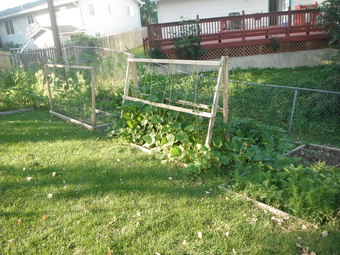 2018 Garden 2018 Garden When people think of a garden they most likely think of the annual garden standards, · Tomatoes · Peppers · Lettuce · Beets · Corn · Etc. But that thinking is missing out on great resource that they can use to reduce work, fertilizer inputs, watering needs and did I mention work. For me the reduced work is a big seller when it comes to gardening and the amount of work it can take depending on your techniques can be staggering. That is why I am a big fan of perennial crops in place of annual crops wherever possible. I know right…. It’s January and I am already talking about the summer garden. But if you are a serious gardener like me you need to start planning this early because before you know it the early cool season crops can be going in the ground. The winter is perfect time to look back on your garden and figure out what you did right what you did wrong and what you want to change before this next season begins. In my case some things that went right this last summer would be the following,
Things I did wrong…
Planning for next year After you have had a chance to reflect on the previous year you can now plan better for next year. Things that you should figure out now would include,
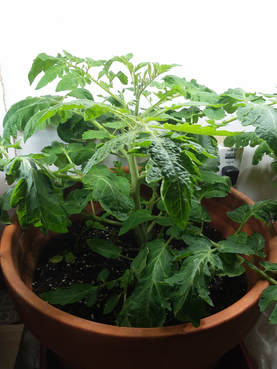 Cherry Tomato Cherry Tomato
Here we are at the end of December and for most us were are long past the end of the growing season and we are enjoying the fruits of our labor. Maybe you are the type of person that is saying finally I can take break and relax a bit or maybe you are like me and are bemoaning the lack or warm sun and rainy nights that led to such a beautiful outside garden.
Even though the weather is getting colder and you know the frost is coming fear not because you can continue to grow delicious food inside your home. With today’s LED light technology it is easier and cheaper than ever before to set up a system for growing food inside all winter long. When most people are planting a garden they think they have only one shot at in the spring. Well thankfully for unlucky gardeners like me that is simply not the case. When you are growing a garden in most parts of the United States you can get 2 sometimes 3 crops from the same plot of land depending on how far south you live. In the midwest where I live if I plan it right I can get two crops of produce from the same plot of land.
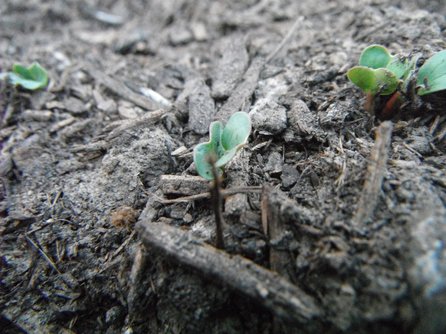 Here we are again at the very beginning of the spring planting season. If you live down in the southern part of the US chances are you are already gearing up for planting since you have that wondrously long growing season. Up here in the Midwest we do not quite enjoy that luck so we are still dreaming of the spring planting and the only thing we can do is start our seedlings. So with that in mind now is the time to start your own seedlings indoors so that they will be large enough for transplanting when it is finally warm enough. In reality you need to start very few types of plants indoors and that is only because they need a longer growing season than can be provided. I will typically only start tomatoes, peppers and watermelons indoors and will instead direct seed the rest when the weather allows. You can also use season extension techniques like low tunnels or hoop houses to protect and encourage new growth earlier. It is very tempting to jump the gun when it comes to new planting especially if you have unseasonable warm weather but make to pay attention to the local last frost dates and if you want to plant earlier seriously consider using low tunnel hoop house to protect against those surprise frosts. When you decide to plant a tree there are many different things you must take into account before you purchase the tree. You will need to answer a few key questions before you can figure out what type of tree you should plant in that area. · Will this tree be planted near a structure? · Will the tree be planted underneath utility lines? · What type of soils do you have at your site? · Do you have enough rain or supplemental water to grow a tree successfully? · What is the primary purpose of the tree? (shade, aesthetics, food production etc.) Every year about this time it after the harvest is done and all the various garden tools like sprinklers, hoses and cultivators have been put away there is one last thing to do. Soil believe it or not is a living thing just like us and like us it needs time to take a break and rest from all the heavy work it has been doing for you all summer. All the delicious food you have eaten from the garden come at price to the soil in tern if fertility, tilth and overall health. So if you want to continue to have good harvests you should take a few key steps that will greatly improve your gardens health every year and theoretically should completely remove the need for artificial fertilizers and wee controls. Step 1 Completely remove any weedy things that may yet be lingering in your garden and either compost them or leave them where you pull them. Step 2 Mulch the whole garden area in leaves, straw, pine needles whatever you can get your hands on for free or cheap. The mulch is by far the most important thing you can have in your garden over winter as it provides a food source for all the microorganisms that live in your soil. These organisms use the material you put there as food and then of course what goes in must comes out as beautiful nutrients and lets face it lots of "poop" This is my garden after I spent a few hours moving leaves that my trees have dropped onto my lawn into the garden.
Step 3 Once you have all the leave in your garden and you have the soil and all the surrounding areas covered up you are good to go for the winter. Now just sit back relax and dream about you want to grow next summer. |
AuthorHello my name is Josh Larson and I am the creator of the Green Living Library. Here on the blog you will find updates to content found in the Green Living Library as well as stories from those living the sustainable life already. Archives
December 2021
Categories
All
|
